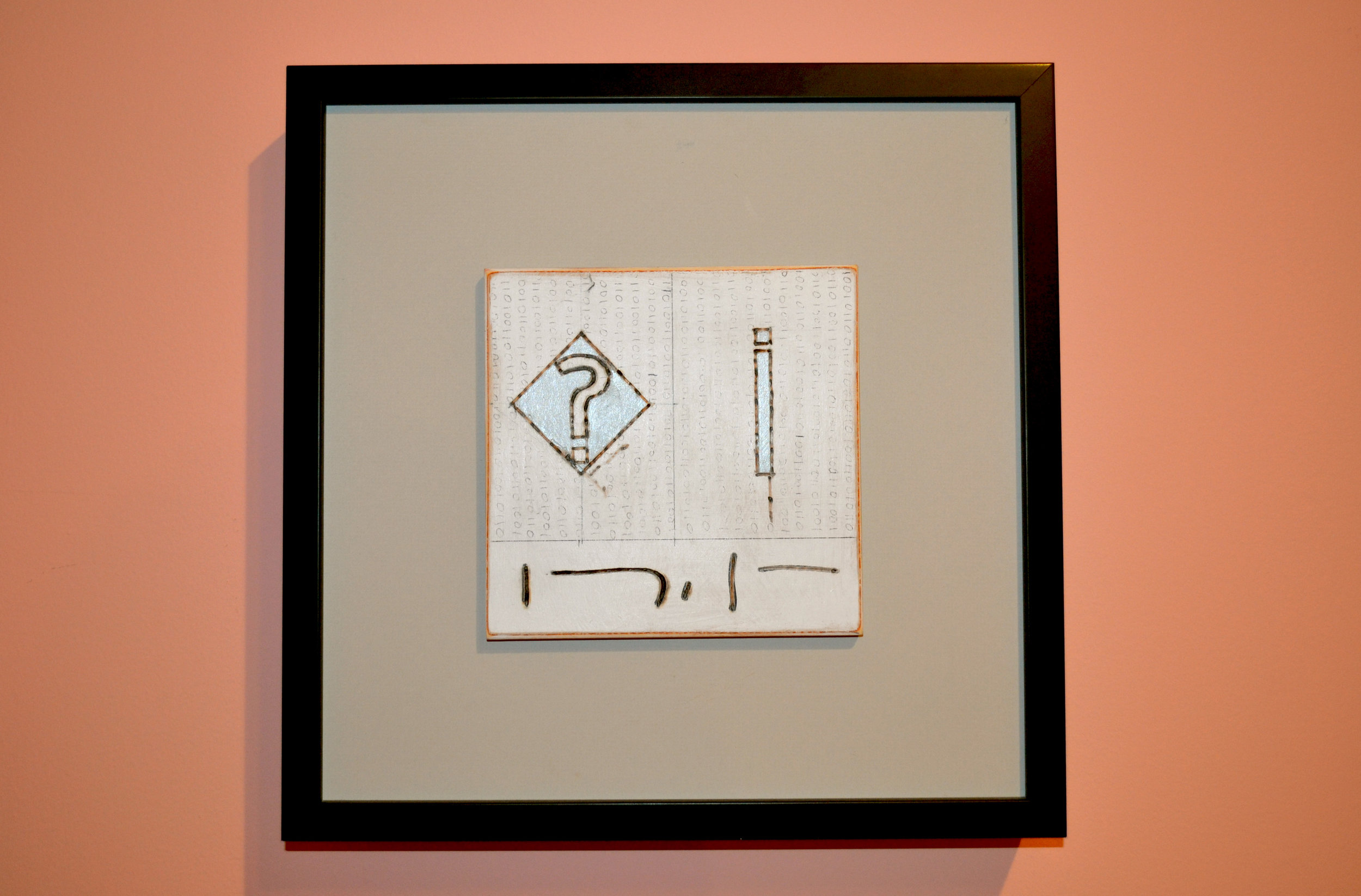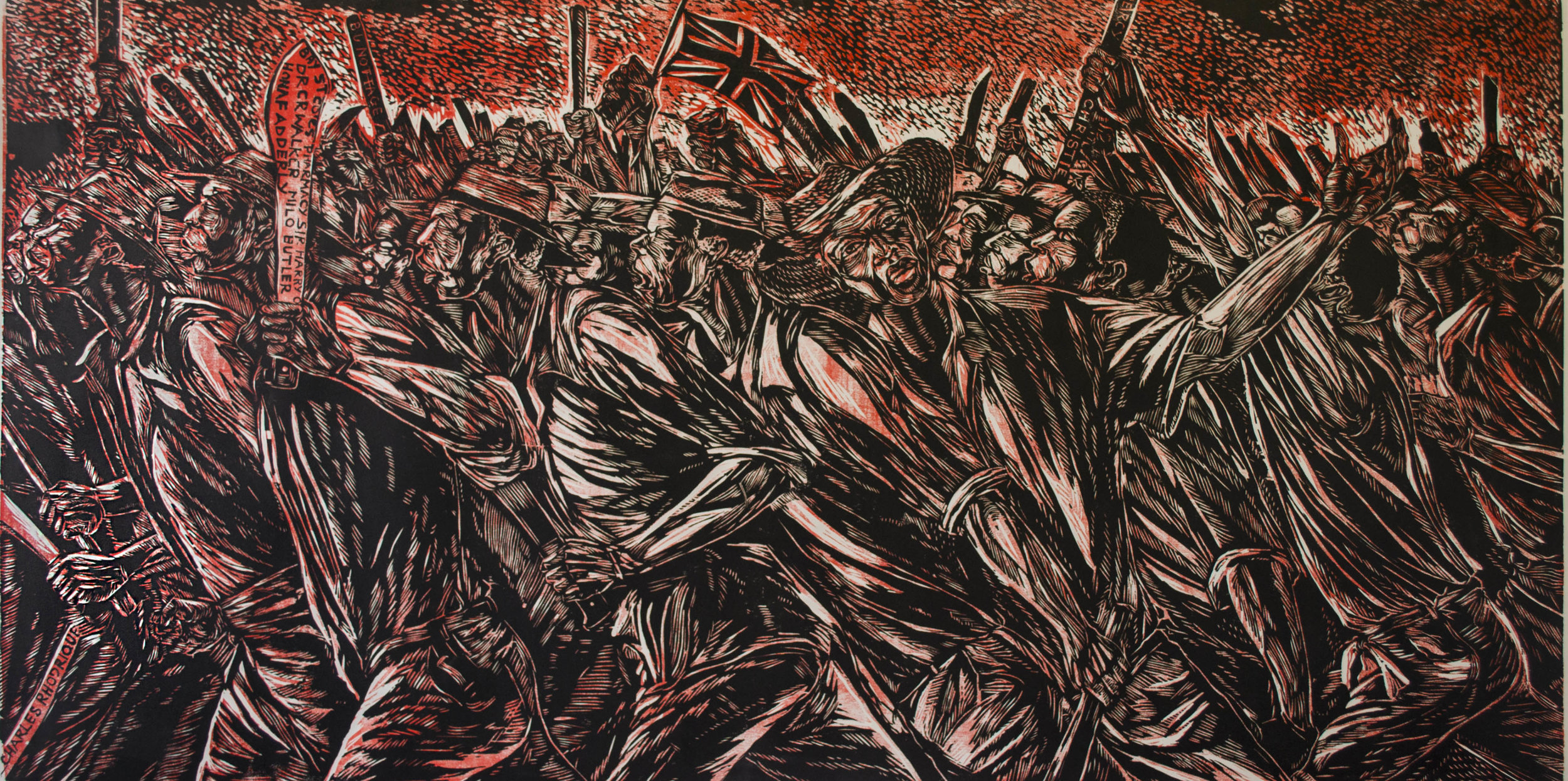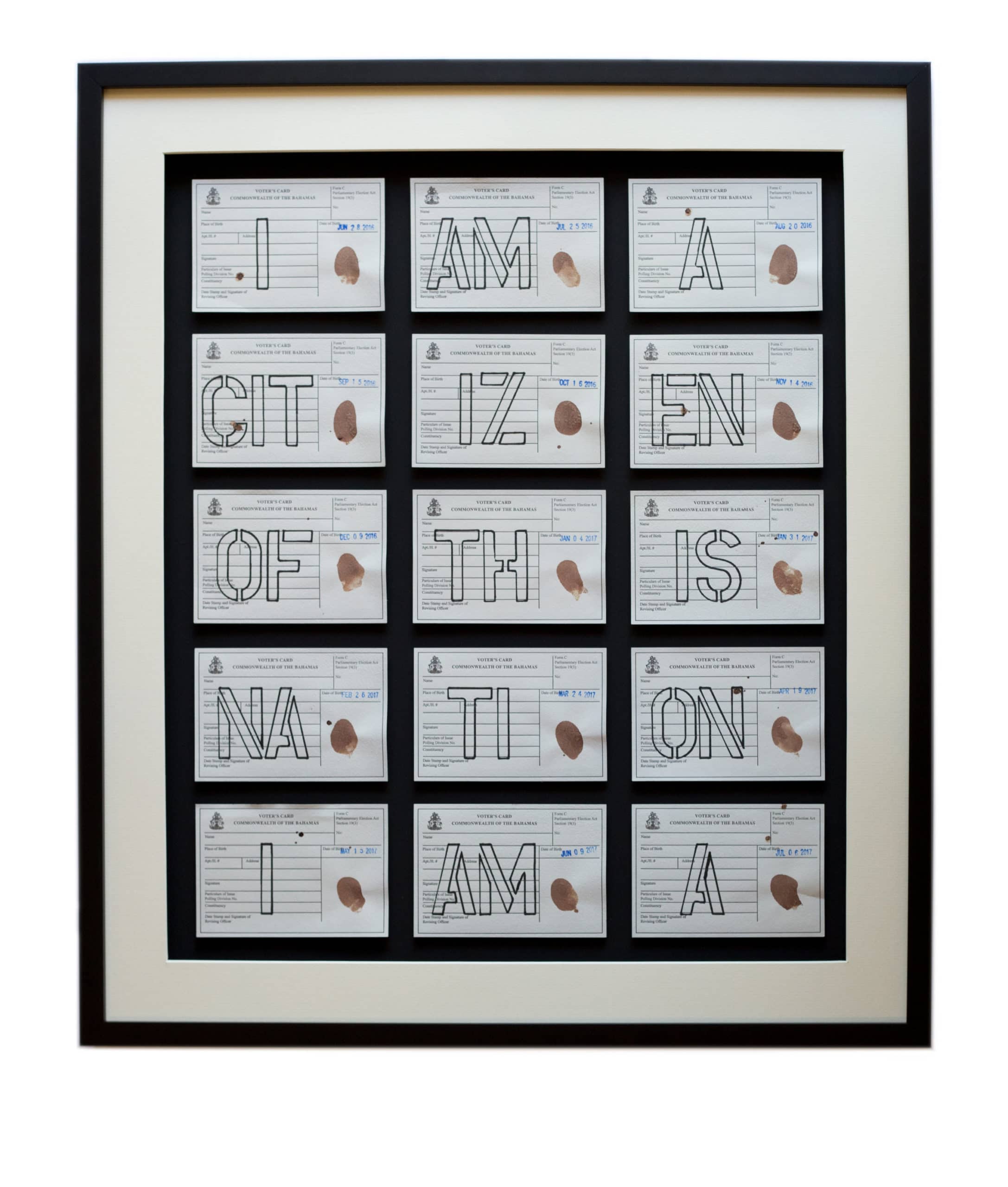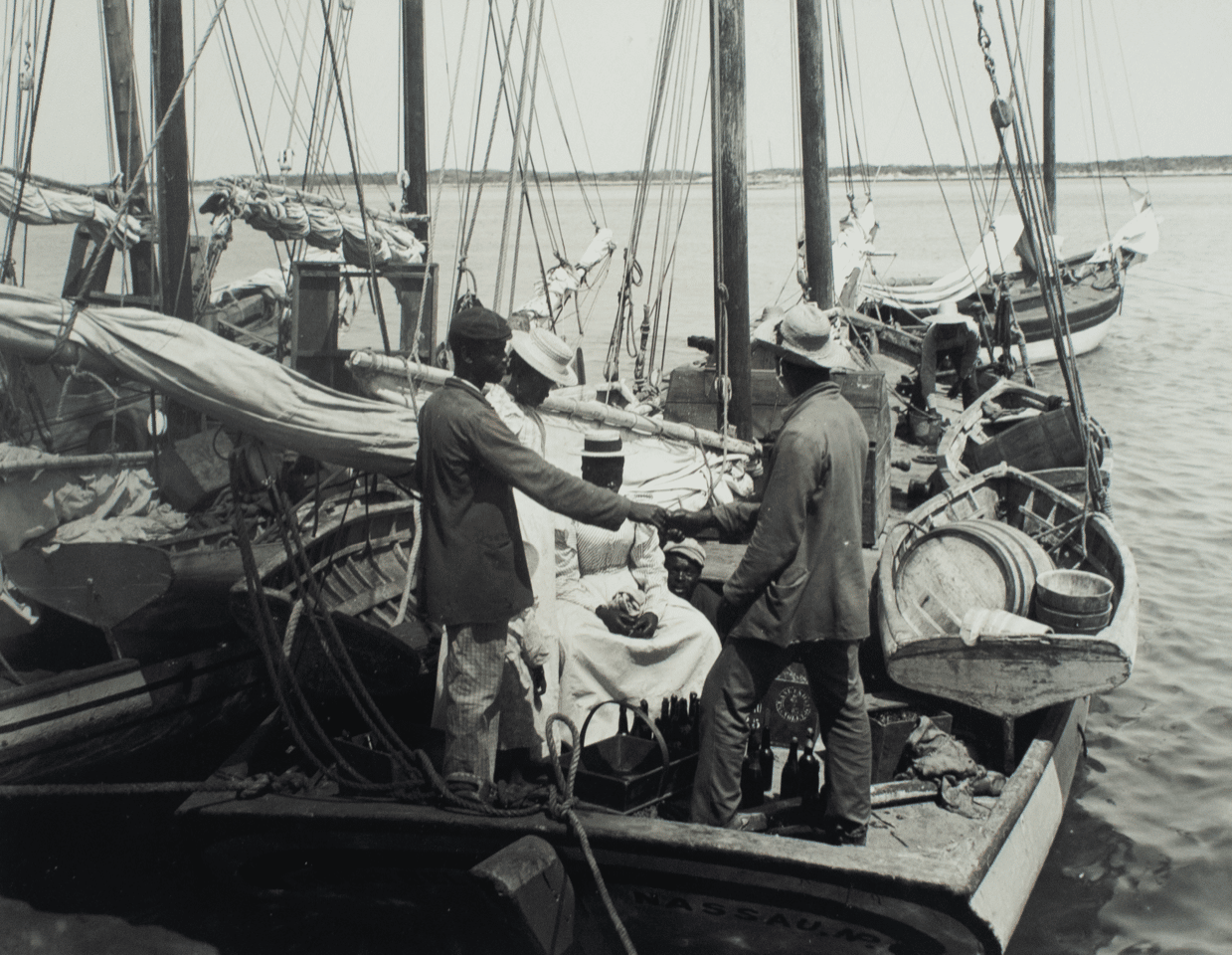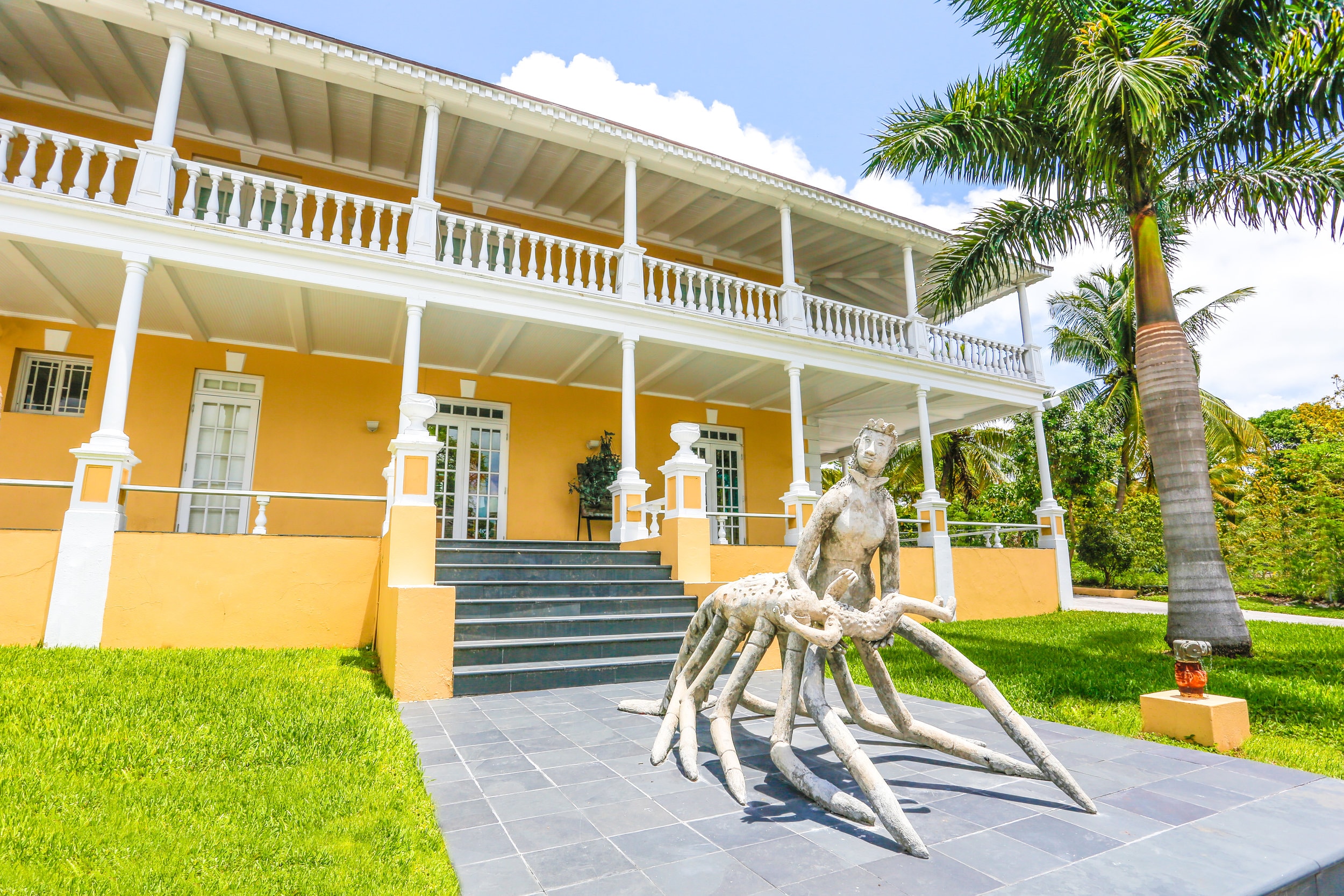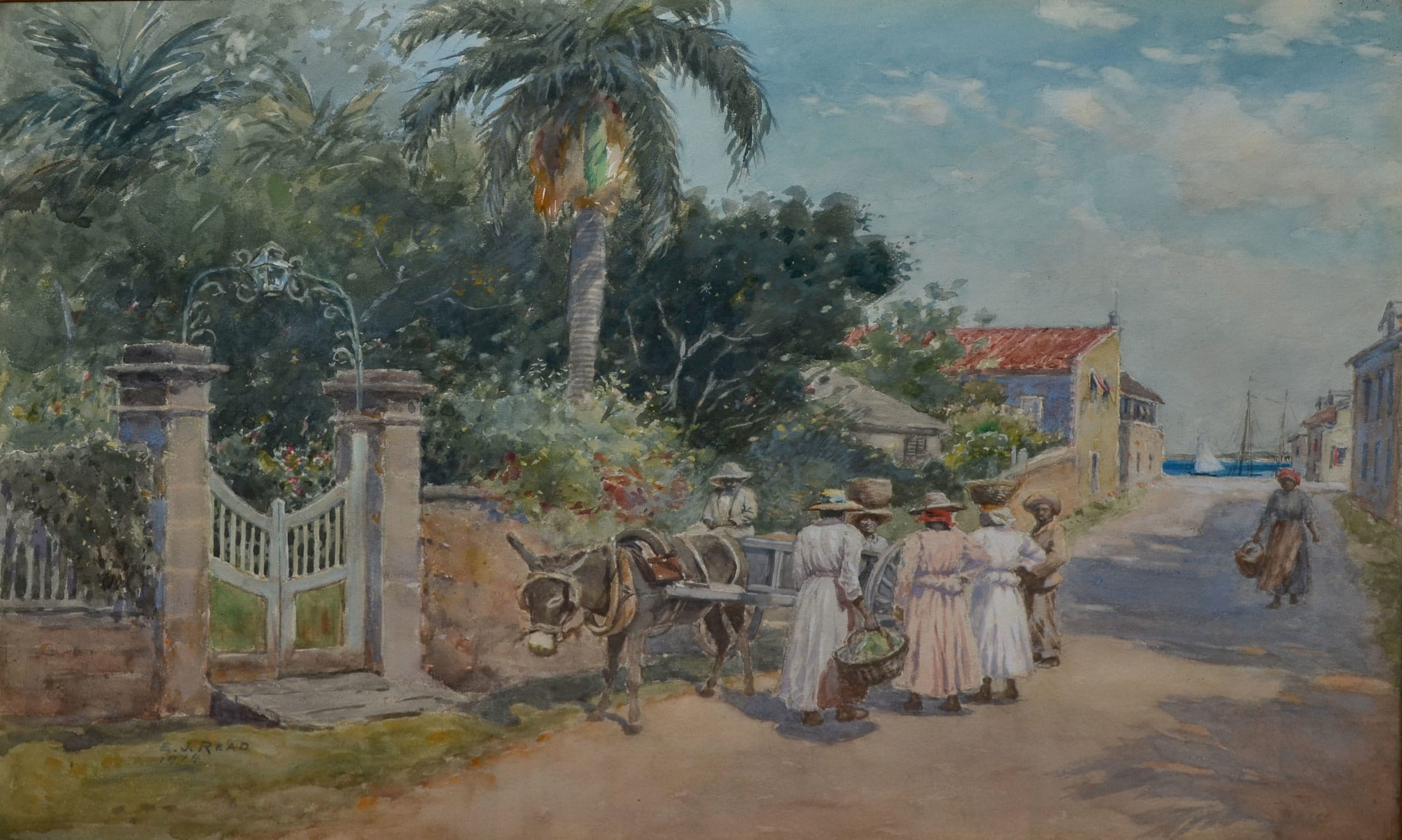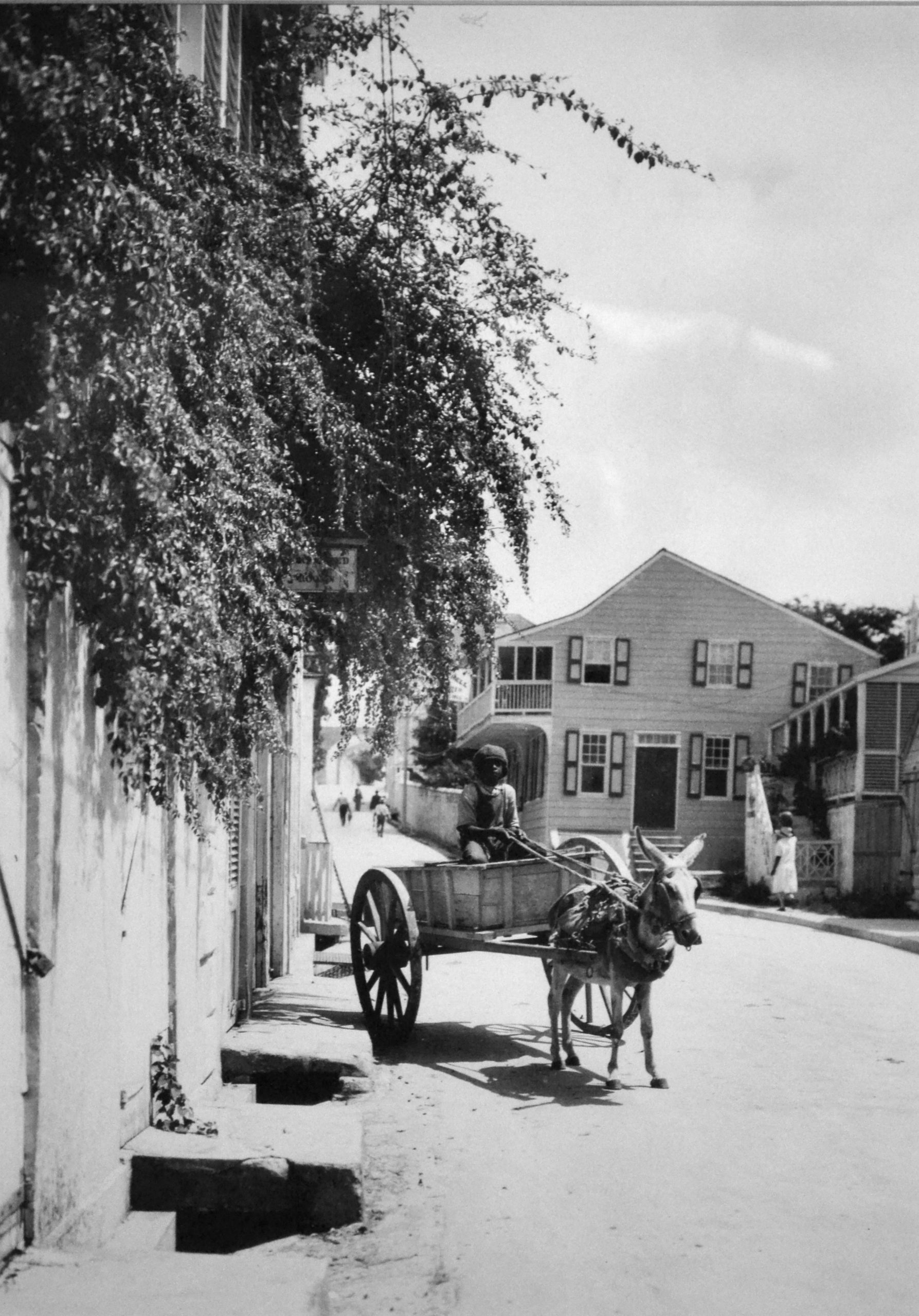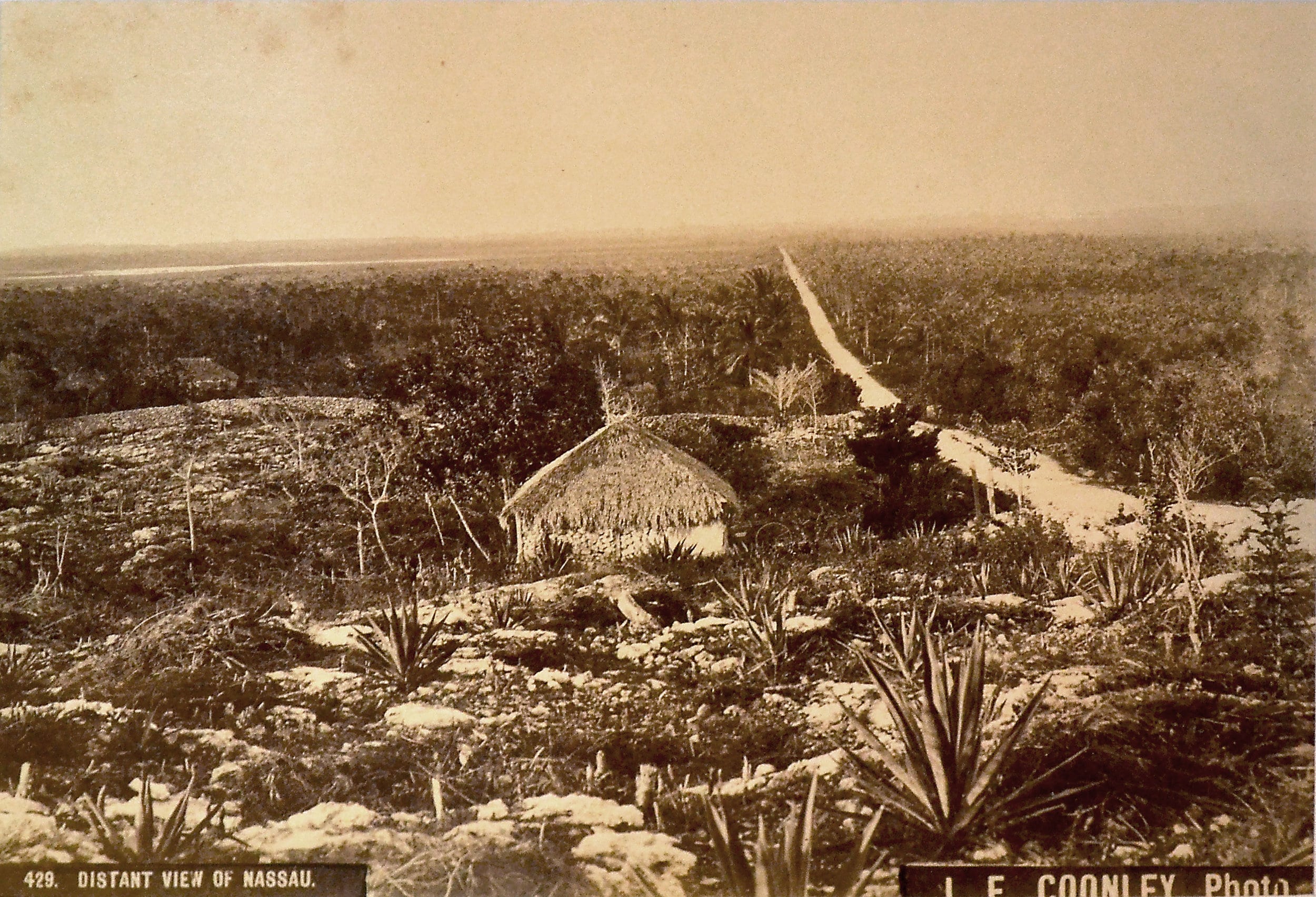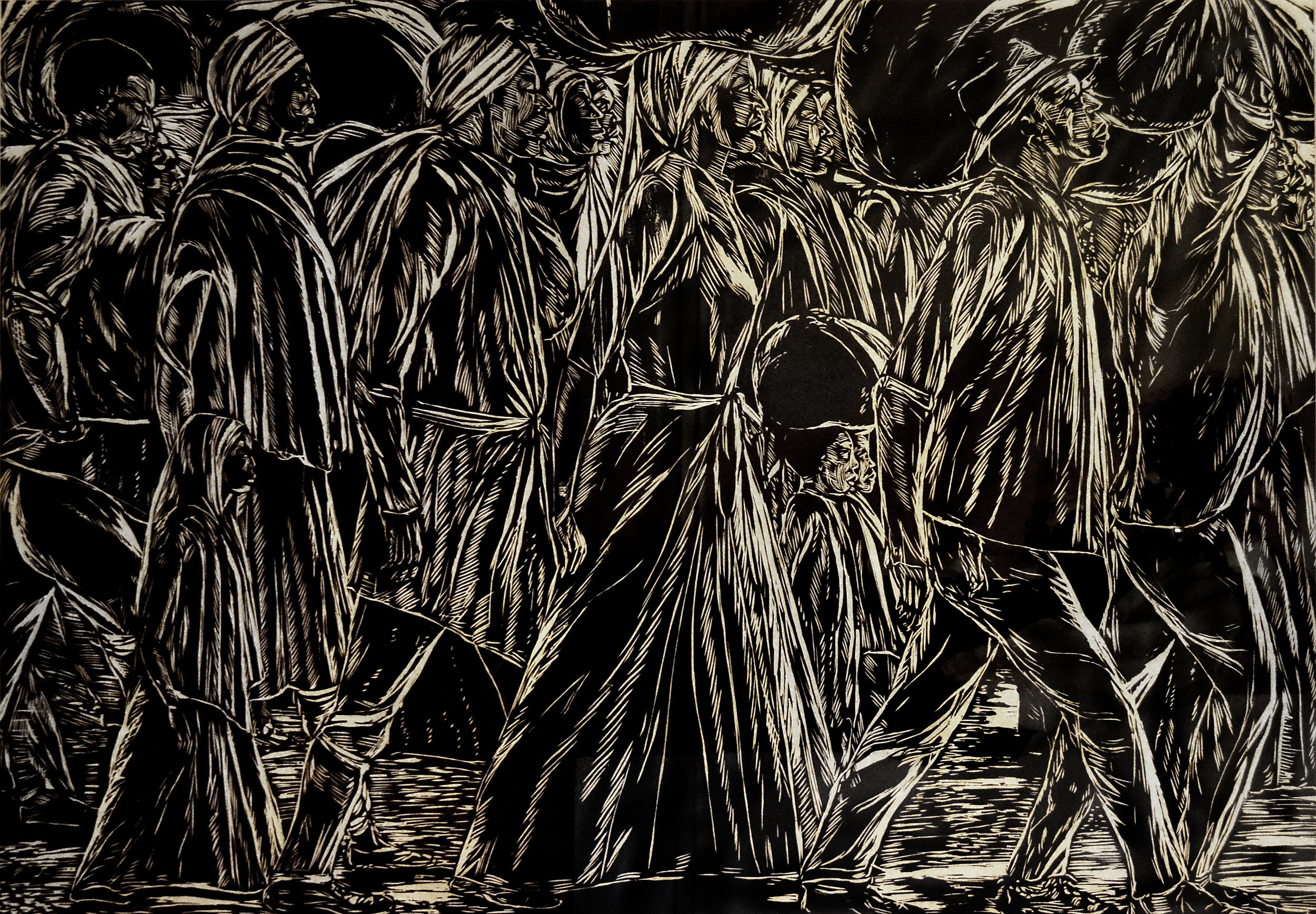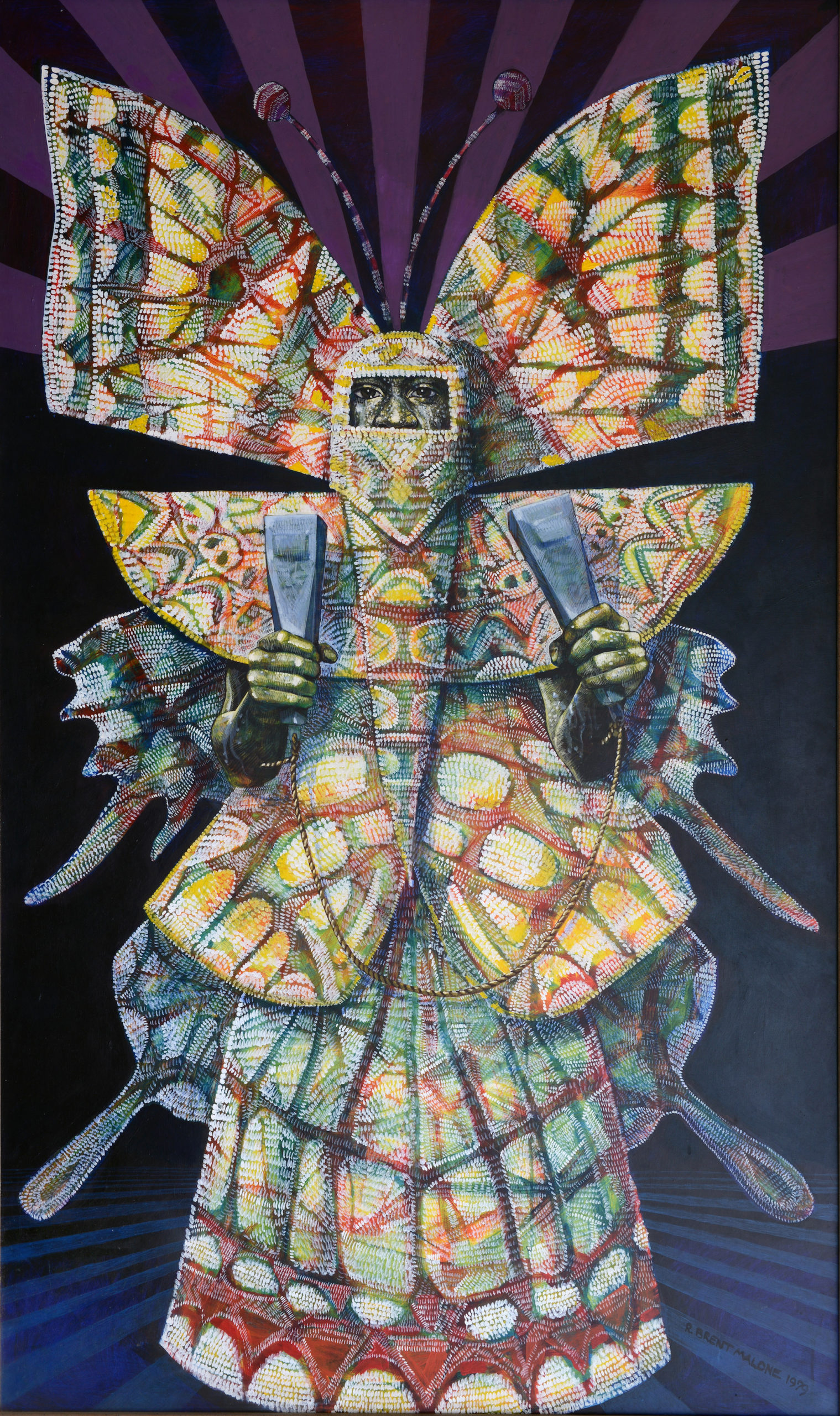By Natalie Willis. Writer, artist, craftswoman, gallerist, designer, filmmaker, potcake lover, and any other number of titles and markers possible. How do we begin to identify ourselves? Artist is a simple enough term, easily applicable to whoever might be involved. But when we get into craftsman or craftswoman, things get a bit more tricky. Margot Bethel fits into all of the above, in addition to being a master carpenter ( or should we say carpentress?), and her work in the current Permanent Exhibition at the NAGB delves into this idea of gendering and binary, and playfully hints at its futility in the world.
Currently browsing: Collection
“Burma Road” (c2008) by Maxwell Taylor
By Natalie Willis. Maxwell Taylor is arguably the father of Bahamian art and his social critique of The Bahamas gives us good reason to believe so. Though Brent Malone is often hailed as such, he often referred the title to Taylor and we like to believe this was less to do with Malone’s graciousness (though certainly he was) and more to do with his admiration of the man. Taylor, along with his contemporaries Kendal Hanna and Brent Malone, all served particular functions in helping us to break down what visual culture in The Bahamas, and particularly engagement with it, can and should mean. First and foremost, all were intensely dedicated in perfecting their craft but their approaches to our landscape – physical, social, and spiritual – are as wildly different as the men themselves.
From the Collection: “Cycle of Abuse” (2017) by Sonia Farmer
By Natalie Willis. How does a referendum asking for men and women to be able to both gain rights in passing on citizenship, visibly backed by the government, still manage to fail? And what do we do in the aftermath? Sonia Farmer’s “Cycle of Abuse” (2017) is a paper work, but it is also time based, and the language employed is more than an exclamation, it is social commentary. She declares her status as a Bahamian citizen via text, and as a cisgendered woman she declares her womanhood through the monthly marking of blood upon these ballots. The blood represents not just her femininity and the rights denied her as a Bahamian woman, but also as a symbol of the various ways that violence is continued against women in this country.
From the Collection: “Untitled (Boat Scene)” (c.1920) by James “Doc” Sands
By Natalie Willis
One would imagine this a typical scene along the Nassau coastline in the 1920s, as so much of our history – painful or profitable – was tied to the sea’s comings and goings. “Doc” Sands gives us what appears to be commonplace, but when we situate this image in the context of its time, and in our broader Bahamian history, things begin to take an exciting turn. Bottles and barrels that appeared to be ordinary fare now begin to remind us of prohibition and bootlegging, and the men shaking hands could very well be in the middle of a handoff. Of course, much of the imagery photographed at this time was staged out of necessity – things needed to be reasonably still for a prolonged time for the image to be taken appropriately. Was Sands staging this image of prohibition and illicit-alcohol Nassau at its roaring start?
James Osborne “Doc” Sands was born in 1885 in Rock Sound, Eleuthera, and is noted one of the first Bahamian photographers. The second of six children, his parents moved him to Nassau for what they felt to be a better education, and at age 18 he was handed over the photo studio of his mentor, American photographer Jacob Frank Coonley. Coonley and his contemporary William Henry Jackson (also American) were well known for their work, and now historically for their contributions to building and framing the picturesque, tropical images of The Bahamas at the start of its tourism industry, and Sands took up the mantle at a somewhat tender age.
From the Collection: “Crawfish Lady” (c2000) by Wellington Bridgewater
By Natalie Willis
What does Bahamian fantasy and myth look like? What magic or horror happens when the divides between animal and human seem to dissolve? What then must Wellington Bridgewater have been thinking when he made the “Crawfish Woman” (c2000) who lies on the Southern steps of the NAGB’s Villa Doyle. Was he thinking that this lobster-lady was like the nefarious lusca, sucking water in and out of blue holes to capture unlucky divers and boats with the power of the oceans. Or was she more like the chickcharney, a generally benign beast who, once wronged, would cause you harm.
From the Collection: “East Street With Donkey and Cart” (1914) by E J Read
By Natalie Willis. Elmer Joseph Read, an American artist (b.1860, death date unknown), painted scenes of life in Nassau that provide a strange sense of documentary and fiction. They are stylised images, but the way Read tries to capture his perspective of life in the capital at the time is useful to us for a few reasons. It helps us to see how Nassau has changed over the years, and it also shows us how those who many modern day Bahamians are descended from were seen in that time. So many of the colonial paintings from this time use the iconography of smiling natives, women in headwraps, along with lush greenery and sea-glass ocean water as colonial propaganda. It gave a way to say, “Look how beautiful and safe and bountiful this empire is!” But these sentiments and picturesque ideals aside, uncomfortable as it may be at times, are still things we feel today, albeit in an evolved and shifted form.
From the Collection: “Untitled (Balcony House on Market Street)” (ca 1920) by James Osborne “Doc” Sands
By Natalie Willis. There is this assumed romanticism of the past for many, especially when looking the quaint images of Nassau-from-yesteryear. But here, we find it is often laced with a pain of looking at where we were as a nation, those issues we faced then and the echoes of this past that we deal with now. “Untitled (Balcony House on Market Street)” (ca. 1920) by James Osborne “Doc” Sands shows us a Bahamas that is still reeling and reconfiguring after the abolishment of slavery, and post-apprenticeship, even in 1920. The legacy of racial power structures inherited by The Bahamas, and by the wider Caribbean region, was very much present and felt. The tiering of whites, mixed-race, and Black Bahamians is still something we feel today, even with all the work done to dismantle this hegemony.
From the Collection: “A Distant View of Nassau” (c.1857-1904) by Jacob F. Coonley
By Natalie Willis. Looking at this photograph, “distant” is certainly apt in different facets of the word. It is a distant, far off view. It is a distant time, a bygone era. It is also a distant idea to think of Nassau in this way – so largely uninhabited with stretches of green bush for miles, sisal and rocky paths to illustrate this difficult land – formerly difficult for our floral inhabitants, now harder for the people living in what feels like harsh social terrain. The reactions witnessed to this image are very telling, the astonishment on locals faces when they try to imagine a Nassau like this seems like having to tell someone to imagine us in prehistoric times, not just over 200 years ago. That surprise speaks to the way the development has become so utterly integral to our identity in the capital, and truly the country as a whole.
From the Collection: Maxwell Taylor’s “The Immigrants No.3” (c1990)
By Natalie Willis. Maxwell Taylor’s woodcut prints are truly a thing of beauty in more ways than the obvious. The stark contrast and drama of a black and white printed image is something to behold in itself, but the way that he incorporates black bodies and the struggles they go through adds a poignant beauty of a different kind. He doesn’t make the struggle pretty, he shows people with the nobility they deserve, migrants included. Using the traditional practice of woodcut printmaking, Taylor’s “The Immigrants No.3” (c.1990) holds just as much meaning now as it did when it was first shown
From the Collection: “Metamorphosis” (1979) by R Brent Malone
By Natalie Willis. There are few artists who were able to evoke the energy of Junkanoo as Brent Malone did. He didn’t just show vibrant costumes swaying lightly: he showed colours and costumes that vibrated, bodies tense with energy and muscles coiled as cowbells get poised to strike, eyes as red as the feathers from that 3 am lap, sweat dripping down faces holding tired red eyes. Malone set out the path for others to display Junkanoo as the manic, feverish, exhausting, and mesmerizing spectacle it is – he made it his mission to show the feeling at the root of the celebration, the cathartic outpour of energy and freedom. It is fitting that he lends this deference of accurate portrayal to a work that means so much to so many: “Metamorphosis” (1979) is a testament to the idea of a nascent Bahamas, the burgeoning forth of a still transforming nation after independence
